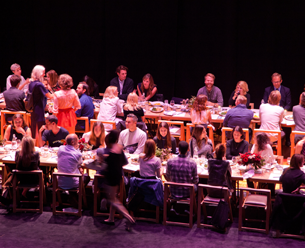Google and Levi’s Are Turning ‘The Garment Into the Platform’
For many consumers, the term “wearables” begins and ends with smartwatches or similar fitness bands that can be worn on the wrist like a bracelet. But, if Google and Levi’s have their way – as both companies tend to do – the working definition of “wearables” will expand to almost any type of clothing imaginable.
WWD reports that Google has teamed up with Levi’s to create the next generation of wearable technology, with the same input functions used in smartwatches woven directly into jeans, shirts, jackets and, yes, even underwear. The initiative is known as Project Jacquard, and is expected to be on the market as early as Fall 2016.
The technology used involves weaving conductive fibers into fabric used for clothing. Paul Dillinger, VP of Innovation at Levi’s, tells the paper that the fibers are so unobtrusive, Levi’s won’t even need to modify their looms once production begins.
For their part, Google reports that they’ve been studying and developing ideas about conductive garments for 20 years. These particular fibers were developed in conjunction with an unnamed Japanese firm.
Ivan Poupyrev, technical program lead at Google’s Advanced Technology and Products Group, told WWD, “What we’ve done is build the interactive element into the textile. We join the yarns with a connector that enables you to connect to a mobile phone or tablet. It’s about the size of a regular Levi’s button and includes a power source and Bluetooth connection.”
“Fundamentally, this is empowering the garment as a platform, not the garment as a device,” Dillinger added.
Project Jacquard was announced today at a Google conference in California, effectively acting as a green light for developers to begin working on apps.
And despite the implications of tech moving ever closer to the center of every aspect of our lives, both companies see this as a way to actually free consumers from the confines of being married to smart devices.
“Up until now, it’s always been a question of adding another device to those you already have,” explained Poupyrev. “It’s another purchase, another thing to buy and carry with you. Clothing? It’s something that’s always in the background, so basic. Why create something else to buy when we already have things to wear?”







